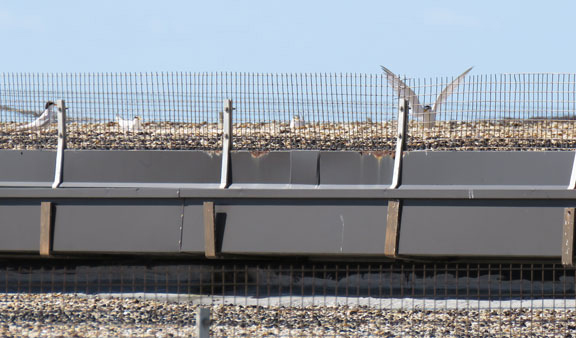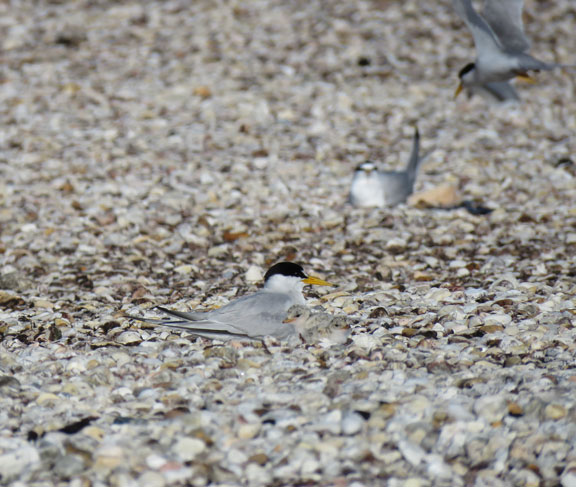
Emily McKiddy, Audubon Florida’s Panhandle rooftop coordinator, works year-round from Pensacola to Panama City. She surveys a variety of gravel rooftop-nesting birds and works with building owners, volunteers, and partners to return tiny, fallen chicks to rooftop nests and to install protective measures that will prevent tiny chicks from falling in subsequent years.

In spring, flocks of least terns return from their wintering grounds in South America to the Florida Panhandle to breed. The birds prefer nesting on flat, open, sandy beaches on the Florida coast. However, increased pressure from tourism and beachside development has made these formerly quiet beaches increasingly difficult to find. In response, the ever-adaptable least terns have expanded their breeding ground options to include less traditional sites such as nesting on gravel rooftops.

While rooftops provide certain advantages that beaches do not, they also come with their own set of dangers. Nesting high in the sky allows the least terns to be free from four-legged predators encountered on beaches, but their eggs and tiny chicks are still at the mercy of avian predators like hawks and owls. Another danger to rooftop nesting is that chicks can fall from rooftops to the ground below, exposing them to the hot Florida sun as well as cars and other predators.
Audubon Florida’s Panhandle Rooftop Coordinator works directly with the gravel-roofed building owners to make rooftop nesting as safe and successful as possible. With the help of both site owners and volunteers we have added protective measures for the chicks’ survival and well-being.
Chick fencing, chick shelters, and having chick rescue boxes on site to protect any fallen chicks until they can be returned to the rooftop are some of the protective measures we have used to increase overall nesting success. Chick fencing has been installed at seven sites from Pensacola to Panama City Beach and in 2017 we will add fencing at three more sites. Fencing prevents chicks from falling off of unprotected roof edges when scared or startled. Chick shelters are made from modified pallets that offer shade during the lethally hot summers and a place to escape from avian threats.
Gulf Power provides rooftop views for Emily as part of a new environmental stewardship project the company is taking on as part of a plan to increase its stewardship outreach.
Protective measures are installed on rooftops in March, before the birds arrive and begin selecting nest sites. Audubon relies largely on the help of volunteers to put the fencing and shelters on the appropriate rooftops. If you are interested in helping install these rooftop enhancements at one of our sites please contact Emily McKiddy at (608) 332-3802 or emckiddy@audubon.org.
